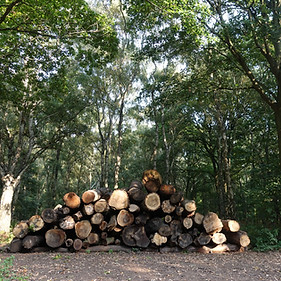
THE FUTURE OF THE MOBILITY AND ENERGY SECTORS
Half of humanity (3.5 billion people) currently live in cities, a number projected to grow to 5 billion by 2030, with 95% of that urban sprawl predicted to take place in the developing world in the coming decades. From this overwhelming growth of the population living in cities, there is a need to generate jobs and prosperity without harming land and resources.






THE PROBLEM
In light of the growth paradigm we face, the energy sector becomes crucial, becoming one of the pillars of growth, development and competitiveness of modern economies.
While this sector is central to the production of industrial, commercial and social wealth, energy production - and its consumption - puts too much pressure on the environment:

Greenhouse gas emissions and atmospheric pollutants

Excessive use of soils

Generation of excess waste

Oil Spills
This pressure contributes to climate change, damages natural ecosystems and the anthropogenic environment, and has adverse effects on human health.


CLIMATE CHANGES


DAMAGE TO ECOSYSTEMS


ADVERSE HEALTH IMPACTS
TRANSPORTATION SECTOR
The transportation sector has been rapidly growing since 1990. It is currently the sector that consumes the most energy.
1/3
FINAL ENERGY CONSUMPTION OF EEA COUNTRIES
(EUROPEAN ENVIRONMENT ASSOCIATION)
20%
GREENHOUSE EFFECT GAS EMISSION
In Portugal, the transportation sector is also one of the most energy-consuming sectors of activity:
37.2%
FINAL CONSUMPTION OF PRIMARY ENERGY (2017)
75.5%
FINAL CONSUMPTION OF OIL IN TRANSPORTATION SECTOR
It is in the transport sector that it is urgent to reverse the growing trend of emissions towards their almost complete decarbonization by 2050.

TOWARDS THE FUTURE
The EU proposed the adoption of a plan:

40%
GREEN HOUSE EFFECT GAS REDUCTION
(CONCERNING 1990 VALUES)
2030
This goal, if met, allows us to enter a low carbon economy, implementing the commitments made in the Paris Agreement.
Aligned with the European strategy, the Portuguese government has recently elaborated:
-
National Energy and Climate Plan-2030 (PNEC-2030).
-
Roadmap for Carbon Neutrality 2050 (RNC2050)
The Goals
-
Explore the feasibility of trajectories leading to carbon neutrality
-
Identify the main decarbonization vectors
-
Estimate the reduction potential of the various sectors of the national economy

ENERGY & INDUSTRY

MOBILITY & TRANSPORTATION

AGRICULTURE, FORESTS & OTHER USES OF SOIL

RESIDUE & WATER RESIDUE
Of the main decarbonization drivers in the transport sector, the most important are greater efficiency and strengthening of public transport systems and the use of biofuels and hydrogen.

Biofuels
The use of biofuel brings with it other relevant issues.



It is imperative that its production is sustainable:
Use of biofuels that do not compete directly with food, such as using biomass from forestry or agricultural sources.



The adoption of biofuels is dependent on their compatibility with existing infrastructure.
The biofuel to be adopted has to be molecularly similar to the current fuel, with similar physicochemical characteristics.
For example, Jetfuel has an extremely regulated composition in order to meet all aeronautical performance and safety indices (energy density, melting point, ignition, etc).
The introduction of sustainable jetfuel into traditional jetfuel can be done as long as it complies with the certification for sustainable fuels for aviation, as well as the mixing limits, as shown below:
50%
FT-SPK
50%
FT-SKA
50%
HEFA-SPK
50%
ATJ-SPK
10%
SIP
LIMIT (%)
SUSTAINABLE FUELS FOR AVIATION
The decarbonization problem is not just focused on the aviation sector - it also scales for land vehicles. In the first quarter of 2019, in the European Union, only 8.5% of registered new cars were powered by alternative fuel sources (within this 8.5%, hybrid models are included). Furthermore, the electricity consumed by these vehicles comes from fossil sources such as coal. Hence the need to invest in research and development of biofuels from biohydrogen and biogas.
These solutions such as BioH2 and BioCH4 are promising and can be applied not only to private vehicles, but also to public transport. In the case of BioH2, its burning or electricity generation in H2 cells, produces only O2 and water, completely removing the problem of CO2 release in urban centers. In the case of BioCH4, its production can be done by recovering industrial CO2.